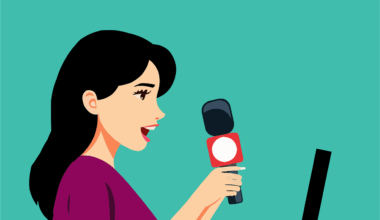Motivation and Impulse Buying: What Drives Spontaneous Purchases?
Impulse buying is a fascinating phenomenon within the realm of consumer behavior. It refers to spontaneous purchasing decisions often driven by emotions rather than rational needs. Understanding the motivations behind these purchases is essential for marketers. Various psychological factors fuel impulse buying, such as emotional triggers, marketing techniques, and social influences. Often, feelings like excitement, happiness, or even stress can lead individuals to make unplanned purchases as a form of instant gratification. Additionally, marketers utilize promotions and limited-time offers to exploit these emotional triggers, increasing the likelihood of impulse buys. Social proof is another strong motivator, where consumers are influenced by seeing others purchase certain items. In essence, impulse buying operates on the emotional vine, making it critical for marketers to understand emotional links to improve sale effectiveness. Strategies to tap into these feelings include evocative advertisements and strategic placement of products in retail spaces. Analyzing consumer motivation can help create effective marketing strategies that stimulate the desire to purchase impulsively. By recognizing the implications of psychological triggers in shopping behavior, businesses can better cater to their target audience’s needs.
Understanding external and internal motivations is key to analyzing impulse buying behavior. Internal motivations involve personal emotions and cognitive processes that influence buying decisions. People might experience a desire to reward themselves after a long week; hence, they treat themselves with a spontaneous shopping spree. On the other hand, external motivations relate to environmental factors that provoke purchases. Well-placed advertisements, promotional events, and in-store displays can significantly impact consumer decisions. Moreover, the environment plays a crucial role in impulse buying. A comfortable store layout with engaging visuals or a pleasant aroma can make shoppers more inclined to buy. Retailers often entice consumers through captivating displays and offers designed to catch the eye and stimulate desire. Social factors, like norms and peer influence, also contribute immensely. Consumers are likely to buy products prominently marketed or endorsed by peers. Thus, a complete understanding of both internal and external motivators enables marketers to devise appealing strategies that resonate with the audience. By strategically addressing these motivations, brands can increase impulse purchase rates while creating a more gratifying shopping experience.
Psychological Factors Influencing Impulse Purchases
Several psychological factors influence impulse buying behavior significantly. Emotion plays a central role; individuals often act upon emotion rather than logic when making spontaneous purchases. For instance, marketers can utilize color psychology to evoke specific emotions that lead to increased impulse buying. Colors like red can create excitement and urgency, enticing shoppers to buy on the spot. Another relevant factor is the concept of scarcity, where limited availability often urges consumers to purchase fearfully. The notion of missing out on a great deal can trigger impulsive decisions. In addition, personal traits, such as impulsivity levels, directly affect purchasing patterns. Impulsive individuals find it hard to resist the urge to buy, while more cautious consumers might deliberate before making purchases. Understanding how these psychological elements come into play helps marketers create persuasive messages and effective campaigns. Utilizing consumer emotions and psychological triggers, brands can boost engagement and encourage spontaneous purchases. Effective communication strategies that resonate emotionally can effectively increase conversion rates while helping companies achieve sales objectives by understanding consumers’ behavioral patterns.
Situational factors also significantly influence impulse buying behaviors. The store environment and layout heavily impact purchasing decisions, with strategically placed products increasing exposure and potential impulse buys. A clutter-free, organized layout makes it easier for shoppers to navigate without feeling overwhelmed. Moreover, factors like store ambiance, ambient music, and scents are vital in attracting consumers. Pleasant sensory experiences encourage shoppers to linger longer and engage more deeply with products, increasing the likelihood of impulsive purchases. Seasonal promotions play a critical role too. Consumers often find it difficult to resist limited-time offers, clearance sales, or exclusive deals. Such promotions create urgency and excitement, compelling shoppers to act quickly and grab a seemingly fantastic deal. Additionally, the presence of social bonds while shopping, like being with friends, often amplifies impulse purchases since individuals might feel encouraged to buy what their companions purchase. By recognizing and leveraging these situational factors, marketers can create shopping experiences that facilitate and capitalize on impulse buying behavior, ultimately benefiting overall sales and leaving consumers feeling satisfied and happy.
The Role of Digital Marketing in Impulse Buying
With the rise of e-commerce, digital marketing significantly influences impulse buying behavior. Online retailers utilize various strategies to capture consumer attention in today’s fast-paced digital environment. Eye-catching visuals, targeted advertising, and mobile-friendly interfaces create an enticing shopping experience that fosters impulse purchases. For instance, personalized recommendations based on browsing history or purchase behavior appeal to the consumer’s desire to click and buy spontaneously. Limited-time online sales are also effective for inciting urgency and driving impulse buys. Moreover, social media platforms have become vital in shaping consumer behavior. Influencers often promote products, leading to increased impulse buying, especially among younger audiences heavily influenced by social media trends. User-generated content showcasing products can also trigger the impulse to purchase. Online reviews serve as social proof, cementing the idea that others have found success with purchases and encouraging new buyers. As physical stores face competition from online platforms, understanding digital marketing’s role in impulsive behaviors becomes essential. Consequently, retailers must adopt effective digital strategies to ensure they remain relevant and capable of driving consumer impulses.
In understanding impulse buying behavior, it is crucial to acknowledge demographic influences. Age, gender, and socioeconomic status can significantly shape purchasing patterns. For example, younger individuals, particularly millennials and Gen Z, display a higher tendency toward impulsive spending, likely driven by factors such as trends and social influences. In contrast, older generations may exhibit more cautious spending behaviors. Women generally are recognized for impulse buying due to emotional triggers, while men often base purchasing decisions on practicality or functionality. Additionally, consumers’ economic situations impact their willingness to make spontaneous purchases. Strained financial resources may deter individuals from purchasing on impulse, while those with disposable income find it easier to indulge. Research also highlights personalities influencing impulsivity and buying patterns. Extroverted people may regard shopping as a social activity, leading to more impulsive choices, whereas introverted shoppers might be more deliberate. By recognizing these demographic differences, marketers can tailor their strategies to different segments, ensuring messaging resonates and motivates consumers effectively. This demographic insight is essential for devising customized marketing plans that promote engagement and impulsive purchasing.
Conclusion: Strategies for Marketers
In conclusion, understanding motivation and impulse buying psychology is paramount for marketers aiming to boost sales effectively. By analyzing the internal and external psychological factors that drive spontaneous purchases, retailers can develop targeted marketing strategies that resonate with their audience. Tactics such as emotional appeals through advertising, creating a welcoming shopping environment, and implementing time-limited promotions are crucial for eliciting the desired impulse to buy. Utilizing data-driven insights from customer behavior can further enhance marketing efforts, enabling brands to personalize the shopping experience. Brands must also leverage social media and influencer partnerships to stimulate impulse purchases among consumers, especially among younger demographics. Recognizing demographic influences is equally essential for crafting tailored strategies that address varying needs, ensuring successful engagement. Elevating the overall shopping experience by fostering emotional connections and tapping into the motivations behind purchases can result in meaningful consumer relationships. Through strategic planning and execution, businesses can enhance impulse buying behavior, contributing to sustained growth and increased brand loyalty. To thrive in the competitive market, marketers must adopt an agile approach, continuously adapting to changing consumer preferences and behaviors.
This is a generic final note on the importance of understanding motivations and buying behaviors. Enhancing strategies to boost sales and connect emotionally with shoppers is ever so critical. Businesses that prioritize psychological insights are more likely to prosper in a competitive landscape. Consistent evaluation and adaptation to consumer needs will lead to sustained success in the evolving marketplace.


